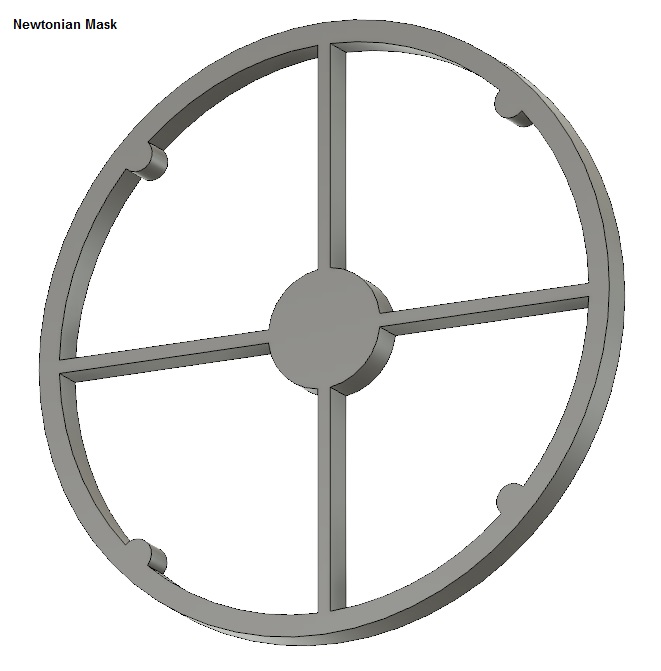Newtonian Mask
I’ve only owned refractors. In my opinion, refractors are great for lunar and planetary imaging, but I have also seen outstanding images taken by fast refractors. Lately, I have become smitten by reflectors, although I do not own one. One thing I like is the diffraction pattern produced by the secondary mirror assembly. I wanted to see if I could simulate it using my refractor. I watched YouTube videos where people used dental floss stretched across the dew shield, but I wasn’t too happy with the results. So, I decided to create my own using a 3D printer.
The first attachment shows a 3D model of the profile of a secondary mirror and vanes, plus some imitation screws that add spice to the diffraction pattern. I created it using AutoDesk’s Fusion 360. The next attachment shows the mask inside my flat-field device, something I call “The Flatinator.” I built it two years ago from a concept I had. In the image, you can see the mask. It is held in there firmly by the surrounding structure, but there is still enough margin that I can rotate it to achieve any desired rotation angle.
I tested it two nights ago on the star, Almach, in Andromeda. It looks pretty spicy! Now I need to try it on a real target.


